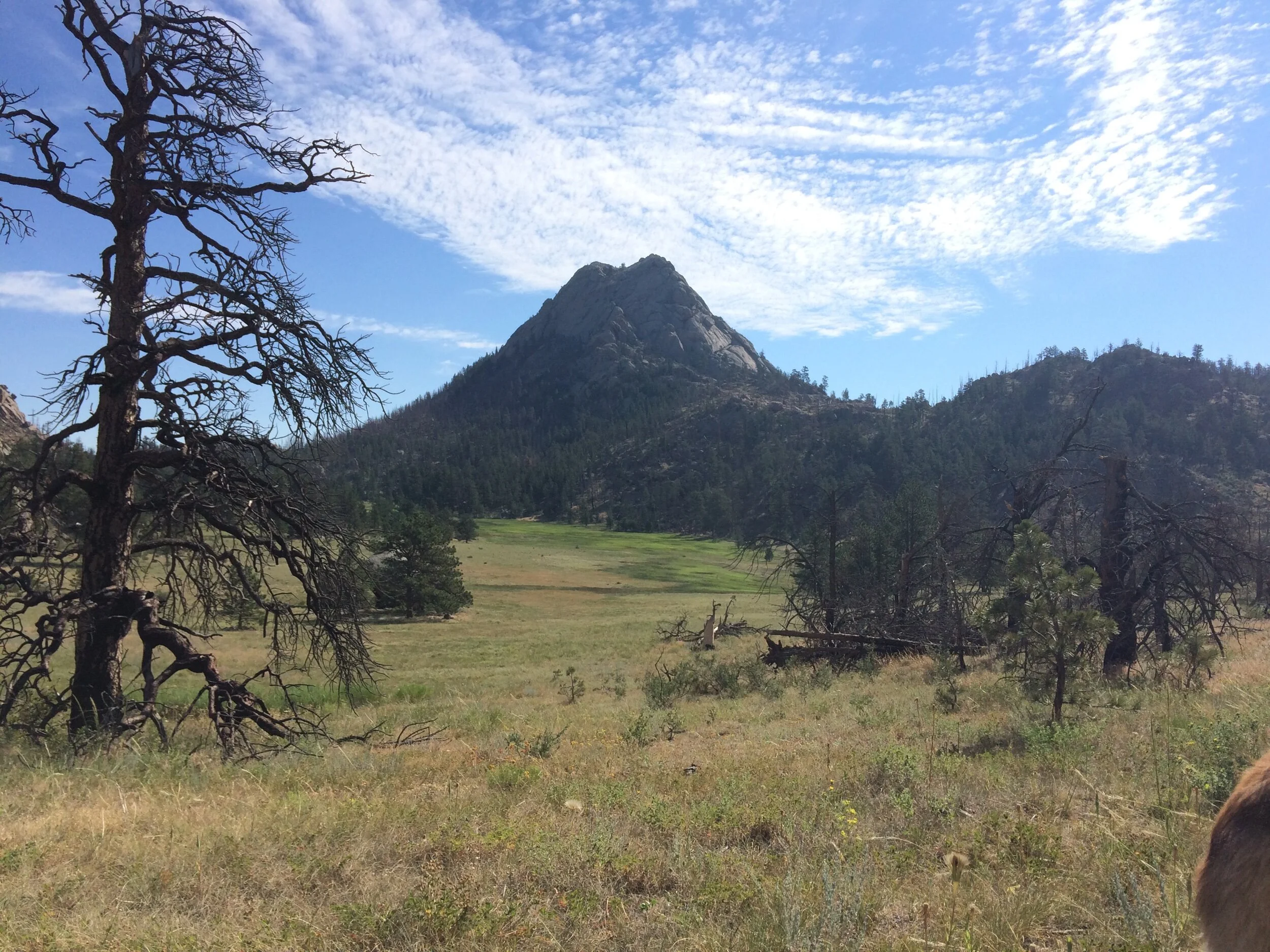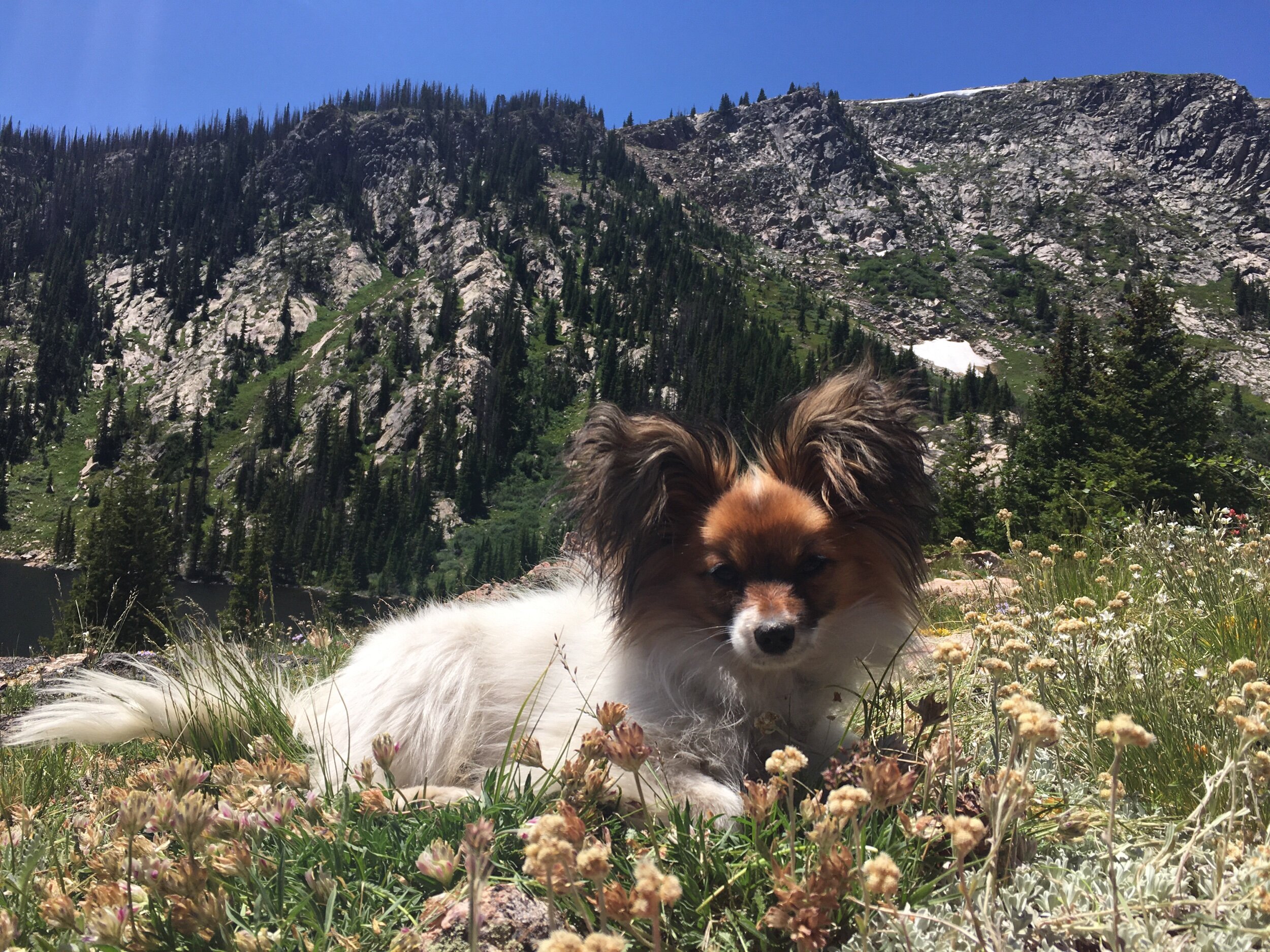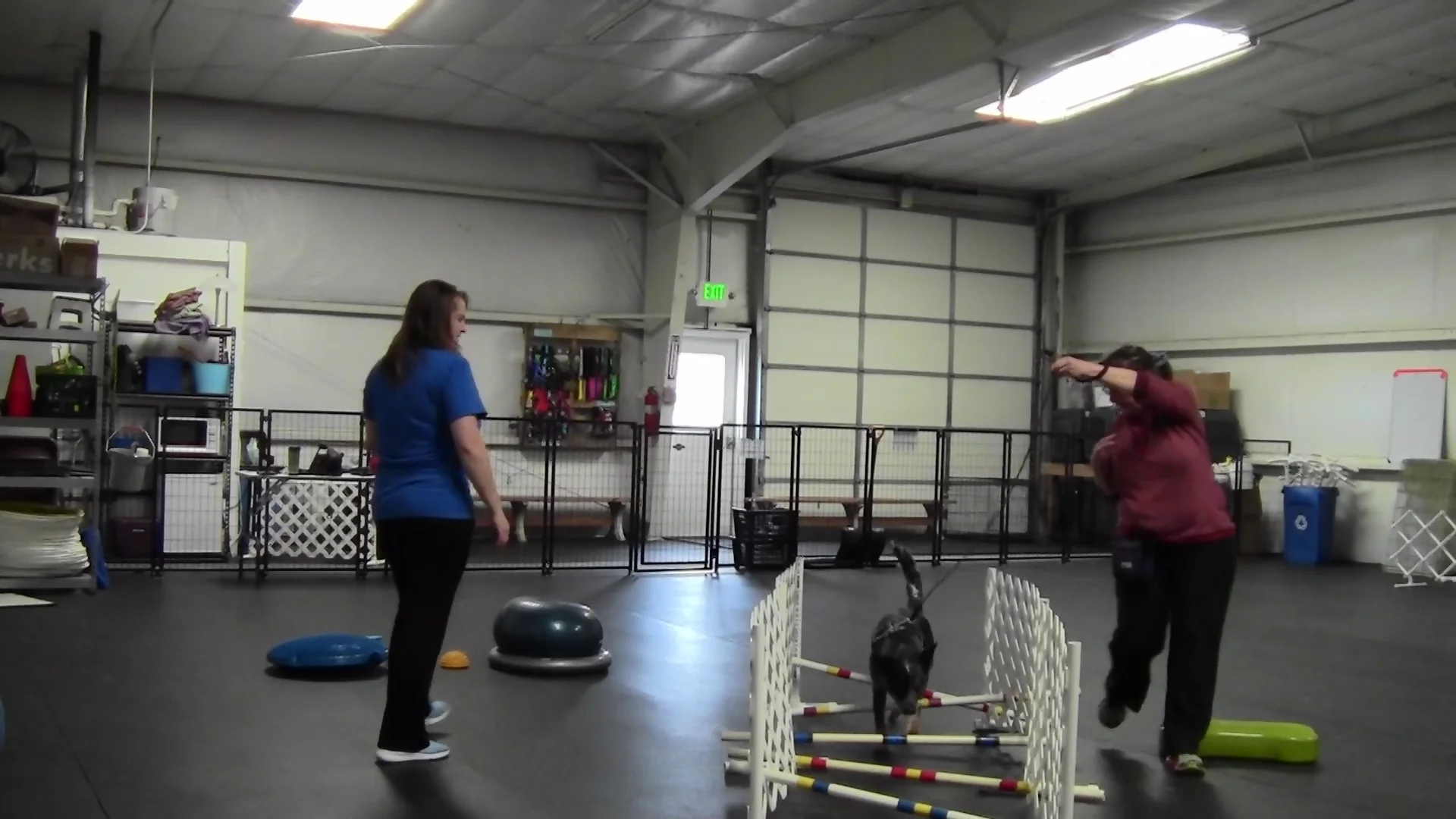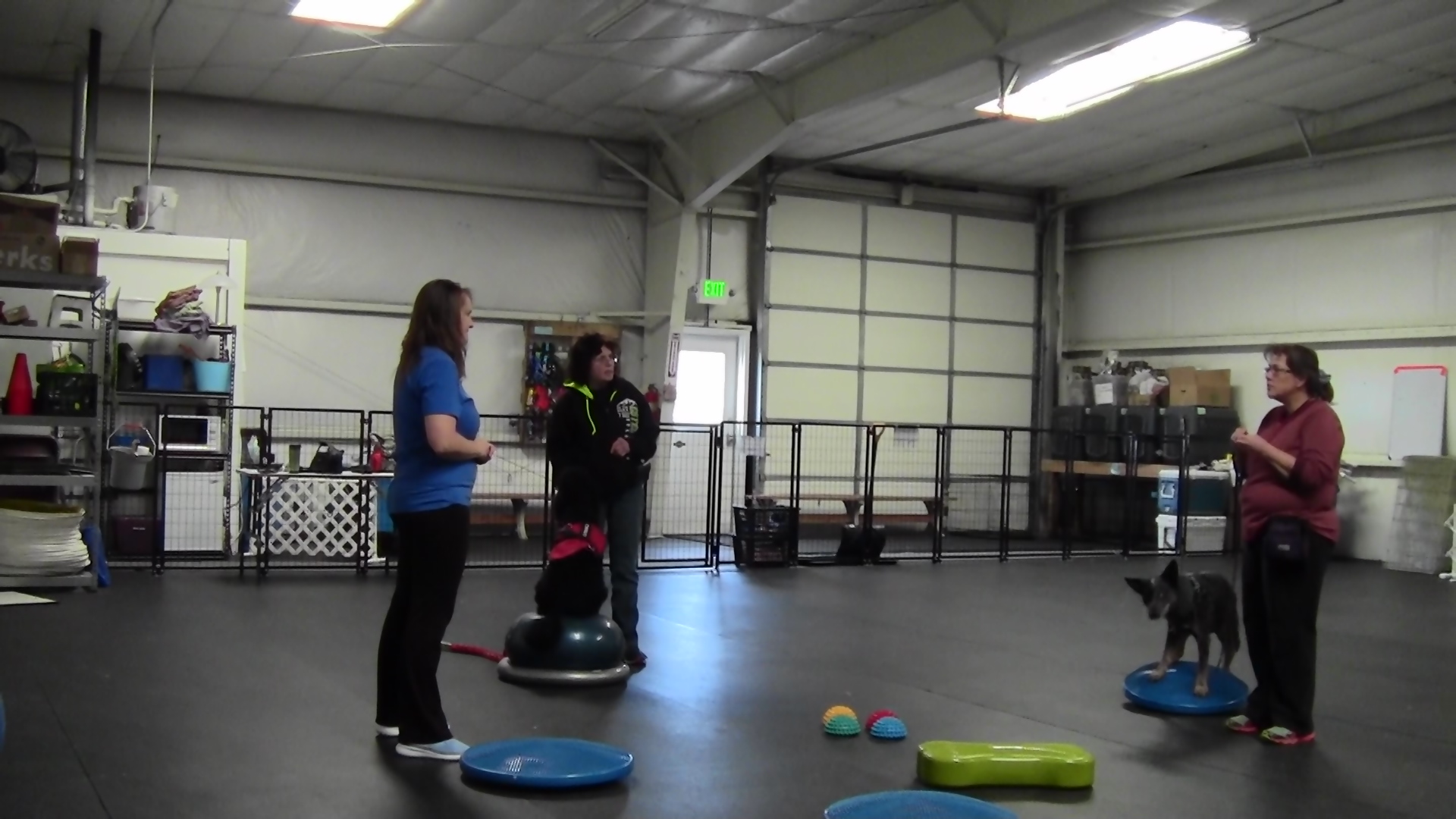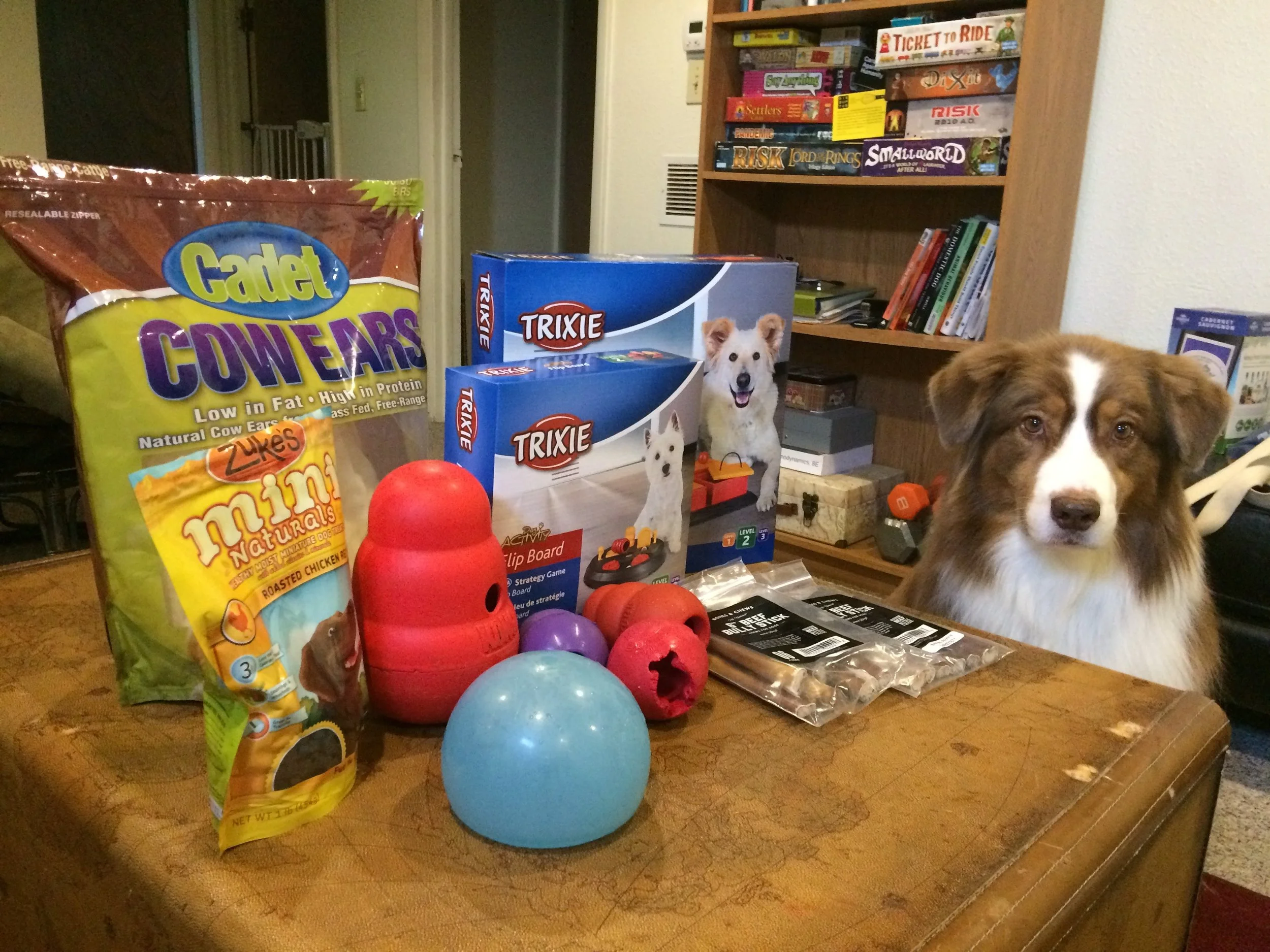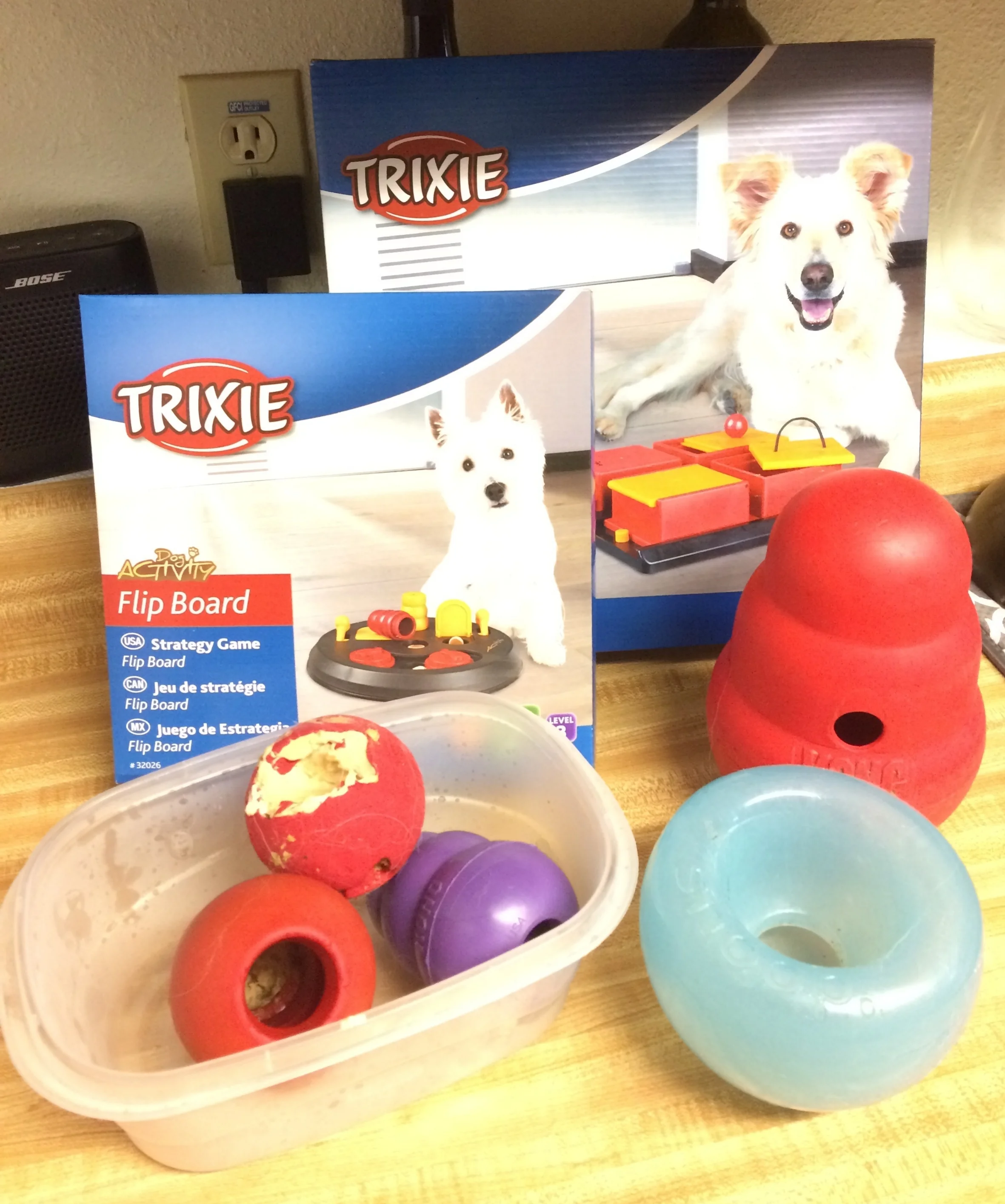By Benah Stiewing
Raising a puppy is very exciting and also a huge responsibility - it’s critical that we, as their guardians, do our best to prepare them for a secure, confident, and stable adulthood. Puppies are born not knowing any human rules or desires - we have to prepare them for the expectations we will eventually have for them and reinforce the behaviors we desire. Below you will find some basic tips and techniques to help you prepare your puppy for being a well-adjusted dog. To dig deeper into puppy training, check out our blog posts for puppy training basics and how to handle common puppy problems. If you’d like more support, consider our webinar Adventure Puppy Basics, which gives a well-rounded, detailed approach to raising your puppy.
Rest
Make sure your puppy is getting lots of rest! Puppies do not have the same emotional and physiological control as older dogs who will generally nap when they need to. If our puppies are getting extra nippy or loud, they may be over-tired and need to be encouraged to take a nap. By putting them in their crate in a quiet space, we can help them get the rest they need. Below is a video of Amber helping Jamie settle in for a nap in his crate.
Confinement
Confinement is a very important skill throughout your dog’s lifetime! Whether it’s being home while you’re out running errands or crated for an overnight at the veterinarian, confinement comfort is an invaluable skill for your puppy. Our webinar Separation Anxiety Prevention is an excellent resource for giving your puppy the absolute best start with confinement!
Place your puppy’s crate in a quiet area of the house away from the hub-bub.
Turn on a white noise machine so your puppy doesn’t have to hear all the fun happening without them.
Inside your puppy’s crate, have a soft towel/bed, a toy, and a couple different options for chewing.
Build a positive association with the crate! Click here to watch a video of Amber teaching Jamie about his crate.
Feed all your puppy’s meals in their crate to continue building that positive relationship!
Before putting your puppy in their crate for a nap, make sure their needs have been met to the best of your ability. If your puppy needs to potty or is hungry or thirsty, they won’t be able to settle.
Use technology! A baby monitor can be used to keep an eye on your puppy while they are resting.
Potty Training
Teaching our puppy where to eliminate (and where not to!) is usually one of our first training goals. It sounds daunting, but with a combination of management, training, and physical development your puppy can master this challenge! Your new puppy is eliminating in the house because it doesn't know any differently yet, and it has a really small and still-developing bladder. Management is necessary to help your puppy make the right choice every time by removing most of the opportunities to make the wrong choice. Giving your puppy the ability to free-roam in your home means that they may potty indoors or get into something they aren’t meant to.
When your puppy is awake: set a timer to take your puppy outside every 20-30 minutes during the first few weeks of a new house training regimen, even if you think he doesn’t need to go that often.
When your puppy wakes up from a nap: Take him outside immediately! Every time!
Puppies often potty after eating, drinking, and playing, so be certain to take them outside after these activities.
Join your puppy outside to ensure that they have eliminated AND so you can reward them for making the choice we desire.
If you are certain your puppy needs to potty (they just woke up from a nap, for example) but it’s just not happening, bring them back inside and put them back in their crate for 5 minutes (set a timer!) and then bring them back outside to try again. Repeat until you get the desired behavior.
Once you have been accident-free for a few days on the 30 minute increments, you can expand to 40-50 minutes between potty breaks.
Never punish your puppy for pottying inside - they are not dirtying your floors on purpose, they are doing the best they can.
Biting/Chewing
Chewing is a normal behavior for dogs, especially from 8 weeks to 6 months. During this period, puppies lose a whopping 42 baby teeth and replace them with adult teeth! Additionally, while humans explore the world through our hands, dogs explore through their mouths. Together, these two factors turn puppies into chewing machines! While this behavior is very normal, that doesn’t make it pleasant or fun and there are concrete steps we can take to help our puppies chew appropriately.
Have lots and lots (and lots!) of safe toys and chews around your puppy at all times. Your puppy should always have access to something appropriate to chew, like Benebones, antlers, hoofs, and toys.
Use every meal as an opportunity to let your puppy chew! By using puzzle feeders, snuffle mats, Kongs, and Toppls, you can meet your puppy’s innate need and burn some extra energy.
You can use sweet potato, pumpkin, canned food, raw (if you feed a raw diet), or kibble soaked in water to stuff in the Kongs and Toppls.
Rotate your toys/chews/feeders so that your puppy doesn’t become bored with the same items.
Plenty of regular rest for your puppy throughout the day - puppies that are overtired are often the most bitey puppies!
If your puppy begins to chew on something inappropriate (like your hand or the couch), simply grab an appropriate chew item and give it to your puppy.
Teach your puppy appropriate ways to interact with your hand instead. Our favorites are teaching a Hand Target or teaching “Lick not Bite”
Lick Not Bite: Put a small amount of a delicious lickable treat, like yogurt or sweet potato puree, on the back of your hand. Present it to your puppy to lick off your hand. Praise them while they do this! If your puppy changes from licking to nibbling, calmly remove your hand for a few seconds, then represent your hand for them to lick again.
Grooming/Handling
Whether you have a poodle or a labrador, all dogs will require a certain level of grooming throughout their lives. For a poodle, that could be a full groom every 6 weeks, while a labrador may only need their nails trimmed bi-weekly. Grooming is an important part of our dog’s welfare, so we want the experience to be positive and stress-free. Building a positive relationship with grooming is something we can start from day one with our puppies. If you want to learn more about preparing your puppy for grooming and handling, check out our webinar Cooperative Care for Better Veterinary and Grooming Visits!
Prepare for your puppy’s first nail trim by slathering a Licki-mat with some peanut butter or wet dog food.
Make sure your puppy has recently eliminated so they aren’t uncomfortable throughout the process.
Offer your puppy the licki-mat on a towel or blanket - once they begin licking, reinforce with extra cookies tossed onto the licki-mat.
Start very gently touching your puppy’s back, neck, ears, legs, toes, etc.
If at any point your puppy leaves the mat/towel, stop touching them and do not force them to get back on the mat. This is your puppy’s way of declining the touching - though we want our dog’s to be comfortable with touching, we never want to force it on them and from a young age we want the puppy to understand that they can decline by simply moving away. If your puppy comes back on the mat/towel, give them a few seconds to just lick before you begin touching again.
If your puppy is doing really well with just touching while licking, in your next session bring a metal spoon and gently touch it to your puppy’s nails while they are licking. This metal sensation starts to prepare them for the actual nail trim.
Once they can tolerate the spoon well, begin actually trimming one foot. Don’t try to trim all 4 feet in one session - aim for quality over quantity. Stay very far away from their quick (the pink part of the nail closer to their actual toes) so you don’t risk hurting them while you’re building a positive association.
Once your puppy is doing well with their nail trims, practice at least once a week until they are around 6 months old - then move to bi-weekly. This is a sensation we want your puppy to be very comfortable with and look forward to because it means lots of yummy snacks for doing basically nothing!
To help your puppy become acclimated to bath time, start building positive associations with the bathtub way before a bath is required.
Put down a non-slip surface in your bathtub to keep your puppy safe and help them feel more comfortable, then practice placing them in the bathtub and immediately giving them their prepared licki-mat.
Stay with them as they enjoy their licki-mat and periodically scatter a few extra treats as they are enjoying the licki-mat.
As your puppy is successful with this exercise, start to gently turn on the water and allow it to flow into the drain as your puppy eats. If they seem uncomfortable, slow down the water flow or move it farther away from your puppy.
Socialization
Socialization is about teaching our puppy how to cope with the world around him and how to handle future adventures. Our puppies are constantly absorbing information about the world around them so it’s vital that we ensure their first few months of life are as positive as possible. While it’s important for your puppy to be exposed to different dogs and people, think about quality over quantity and what skills you want your future dog to have. If you walk your puppy down the street and allow them to pull you towards every person and dog for a greeting, you’re going to have a much more difficult time teaching focus, attention, and loose leash walking.
When you’re out in the world with your puppy, think about neutrality and the reaction you eventually want them to have towards a change in environment.
Grab a coffee at your favorite shop, get your puppy out of the car, and sit outside the coffee shop with treats and your puppy on-leash.
Bring a comfortable mat for your puppy to settle on and some low-value chews like an antler or a Benebone.
As the world passes by, reinforce your puppy for the behaviors you want (lying/sitting down, attention on you, chewing on their antler, and watching stimuli pass by) and use the leash to prevent them from approaching people passing.
If someone wants to greet your puppy, ask them to wait until you have your puppy’s attention, reinforce with a treat, then release them with a “Go say hi!” cue.
If your puppy offers attention on you during the greeting or after it’s finished, reinforce your puppy with a treat.
From 7-16 weeks of age, puppies are in a critical socialization period that offers us a fantastic opportunity to help them acclimate to our world. Remember that learning is always happening, so what goes on in our homes, backyards, and friend’s homes is just as important as the trip into town. If you are central to Fort Collins, CO, our Adventure Puppy Camp is an excellent learning opportunity for your puppy and a chance for you to take a break!
Raising a puppy is so much fun! You get to learn about this entirely new life and build a relationship together from the very start. At times it can feel overwhelming and challenging, so take lots of breaks and ask for help when you need it. If you need extra support, don’t hesitate to contact us today and get started with in-person or online training to help you feel better prepared to raise your puppy.
Summit Dog Training offers group dog training classes & private lessons in Fort Collins, Colorado, as well as online self-study courses & online private lessons for education on how to live the best life with your dog! If you are looking for more training support, please don’t hesitate to contact us! We’d love to help you and your dog get ready for any adventure.








